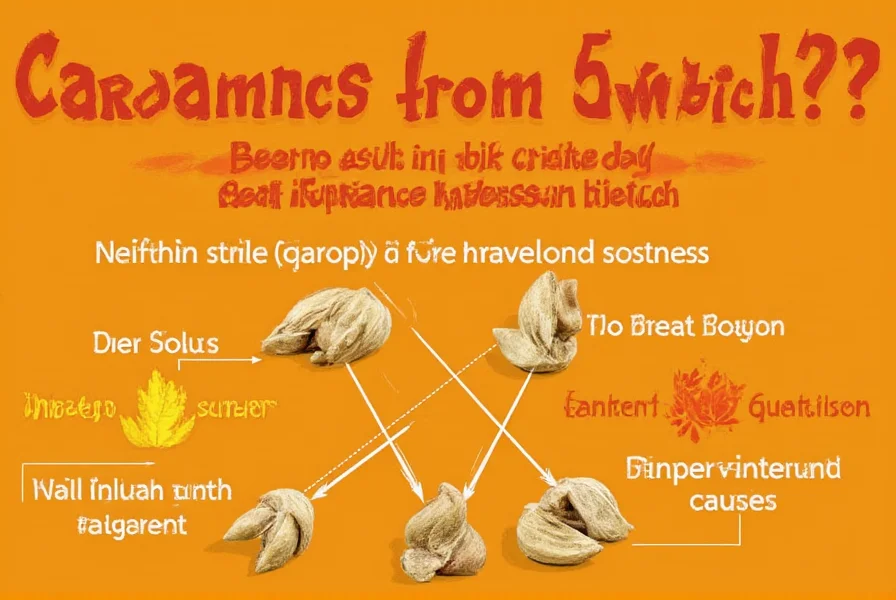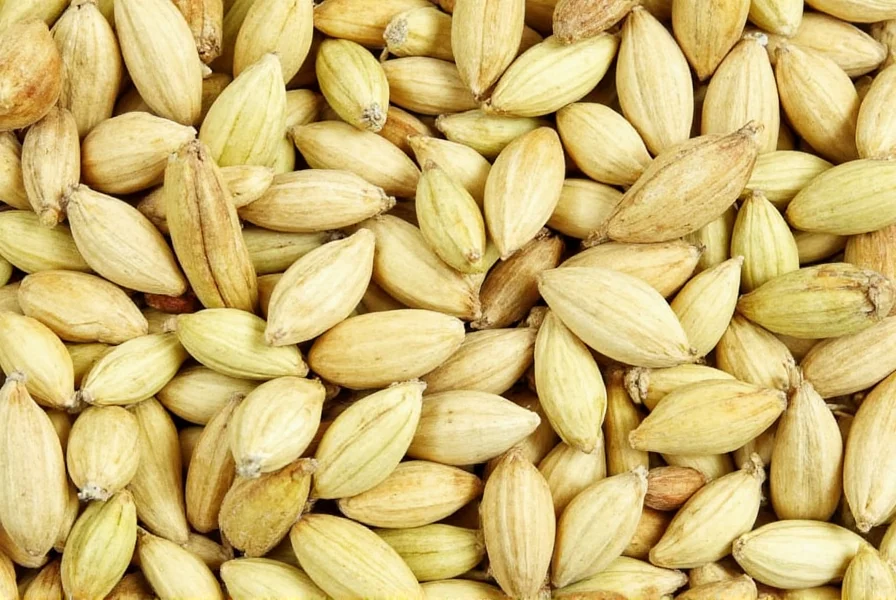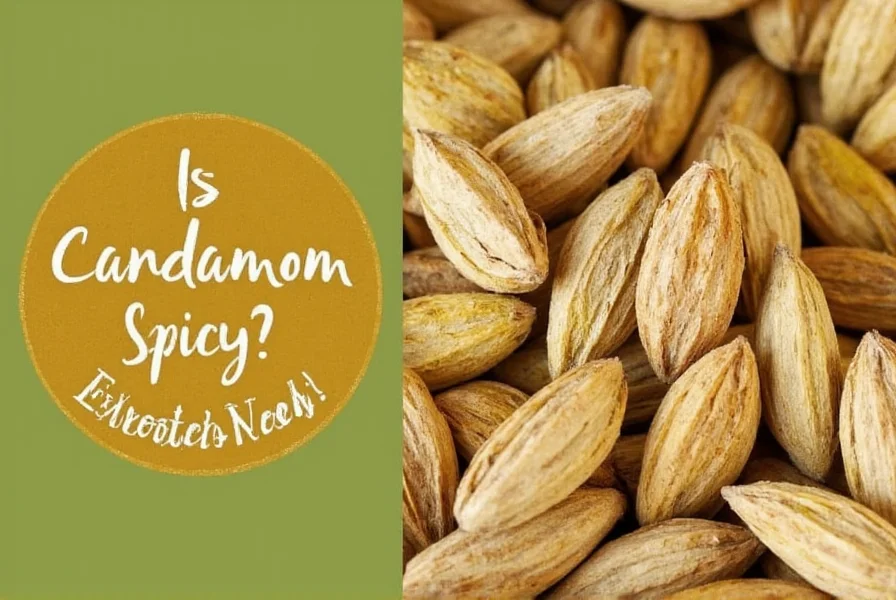When exploring is cardamom spicy, many home cooks and spice enthusiasts find themselves confused by terminology. The word "spicy" can mean both "having strong flavor" and "producing a burning sensation," leading to common misunderstandings about this ancient spice.
Cardamom, one of the world's oldest and most valuable spices, originates from the seeds of plants in the ginger family (Zingiberaceae). Unlike true "hot" spices such as cayenne or black pepper, cardamom delivers a sophisticated flavor experience without any significant heat. Its unique taste profile makes it a staple in both sweet and savory dishes across Middle Eastern, Indian, and Scandinavian cuisines.

Understanding Cardamom's Flavor Profile
To properly address does cardamom have heat like chili, we need to examine its chemical composition. Cardamom contains no capsaicinoids—the compounds that create the burning sensation in chili peppers. Instead, its primary flavor compounds include cineole (also found in eucalyptus), limonene (citrus), and terpinolene (herbal notes).
When people ask is cardamom considered spicy, they're often conflating "spicy" with "having strong flavor." Cardamom does have a potent, distinctive taste, but it's not thermally hot. This misunderstanding frequently leads cooks to expect heat where none exists, potentially altering recipe outcomes.
Cardamom Varieties and Their Flavor Differences
Understanding cardamom spice characteristics requires examining its main varieties:
| Variety | Flavor Profile | Heat Level | Common Uses |
|---|---|---|---|
| Green Cardamom | Citrusy, floral, slightly sweet | 0/10 (no heat) | Indian curries, Scandinavian baking, Middle Eastern coffee |
| Black Cardamom | Smoky, camphorous, earthy | 0/10 (no heat) | North Indian and Nepalese cuisine, meat dishes |
| White Cardamom | Milder, less complex | 0/10 (no heat) | Commercial baking, lower-quality products |
Cardamom vs. Truly Spicy Ingredients
When evaluating cardamom vs spicy peppers, the difference becomes clear. While jalapeños measure 2,500-8,000 Scoville Heat Units (SHU) and habaneros reach 100,000-350,000 SHU, cardamom registers at 0 SHU. It simply doesn't contain the chemical compounds that trigger heat receptors.
This distinction matters significantly for cooks asking is cardamom hot or sweet. Cardamom leans toward the sweet-herbal spectrum rather than the hot-spicy one, though its complexity means it can enhance both sweet and savory applications without adding heat.
Culinary Applications of Cardamom
Understanding cardamom in cooking uses reveals why this spice remains popular despite lacking heat. Its versatility spans:
- Baking: Essential in Scandinavian pastries like Finnish pulla and Swedish kardemummabullar
- Coffee and tea: Whole pods often added to Middle Eastern coffee preparations
- Curry blends: Key component in garam masala and other Indian spice mixes
- Rice dishes: Adds complexity to biryanis and pilafs without overwhelming heat
- Desserts: Complements chocolate, citrus, and other sweet flavors

Common Misconceptions About Cardamom
Many people researching cardamom flavor profile explained encounter these frequent misunderstandings:
- Misconception: Cardamom creates a warming sensation like cinnamon or ginger, so it must be spicy.
Reality: The warmth is aromatic and psychological, not thermal like capsaicin-induced heat. - Misconception: Black cardamom is spicier than green cardamom.
Reality: Black cardamom has a smokier flavor but still contains zero capsaicin. - Misconception: Cardamom should be used sparingly like hot spices.
Reality: Cardamom's flavor intensifies with cooking time, allowing for more generous use than truly spicy ingredients.
Using Cardamom Effectively in Your Kitchen
For those exploring what does cardamom taste like practically, consider these usage tips:
- Crush pods slightly before use to release maximum flavor
- Grind seeds just before adding to dishes for optimal aroma
- Balance with complementary spices like cinnamon and cloves
- Use whole pods in slow-cooked dishes, ground for quick preparations
- Start with 1-2 pods per serving and adjust to taste
Unlike genuinely spicy ingredients that require careful measurement to avoid overwhelming heat, cardamom offers flexibility in the kitchen. Its complex flavor profile enhances dishes without dominating them, making it a valuable addition to any spice collection.
Frequently Asked Questions
Does cardamom have any heat at all?
No, cardamom contains no capsaicin and produces zero heat sensation. Its warming quality comes from aromatic compounds, not thermal heat like chili peppers.
Why do some people think cardamom is spicy?
The confusion stems from the dual meaning of "spicy"—referring both to strong flavor and thermal heat. Cardamom has a potent, complex flavor that some mistake for spiciness.
Can I substitute cardamom for spicy ingredients in recipes?
No, cardamom cannot replace genuinely spicy ingredients like chili peppers or black pepper. It provides different flavor notes without any heat, so substitutions would significantly alter the dish's character.
Which spice is closest to cardamom in flavor profile?
No single spice perfectly replicates cardamom's complex profile, but a combination of equal parts cinnamon, nutmeg, and coriander comes closest to mimicking its citrusy, floral, and warm characteristics.
Does cardamom's flavor change when cooked?
Yes, cardamom's flavor becomes more mellow and integrated when cooked. The citrus notes soften while the warm, herbal characteristics become more pronounced, making it excellent for both quick preparations and slow-cooked dishes.











 浙公网安备
33010002000092号
浙公网安备
33010002000092号 浙B2-20120091-4
浙B2-20120091-4